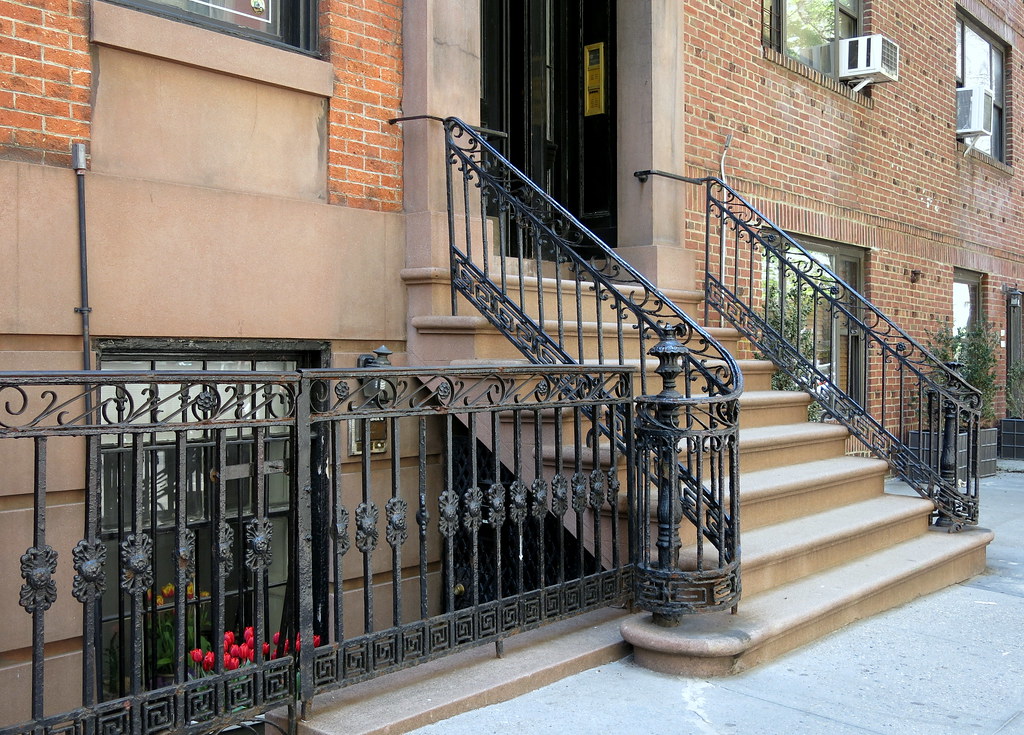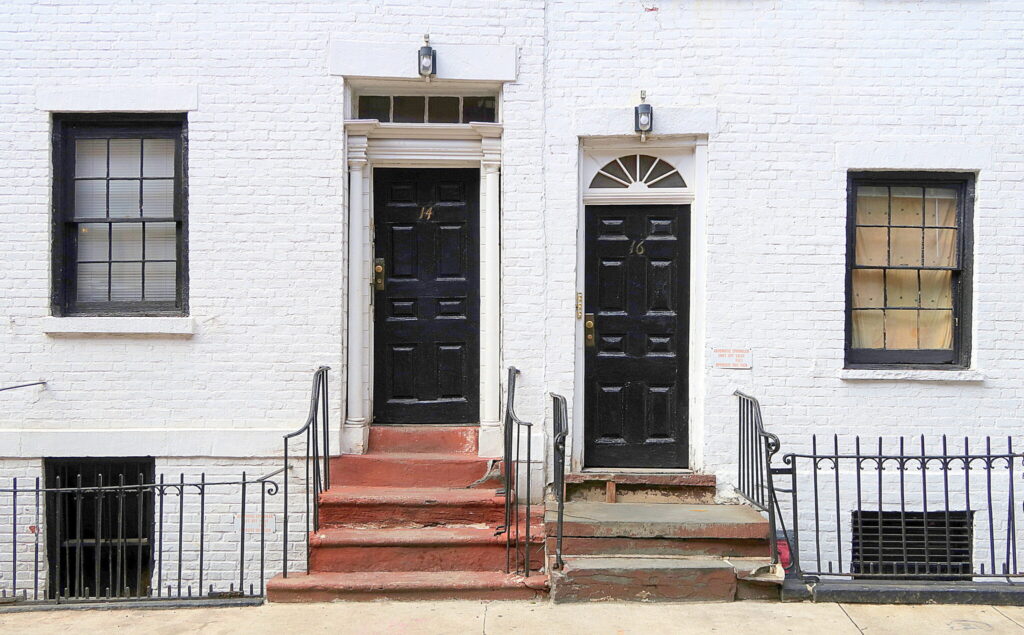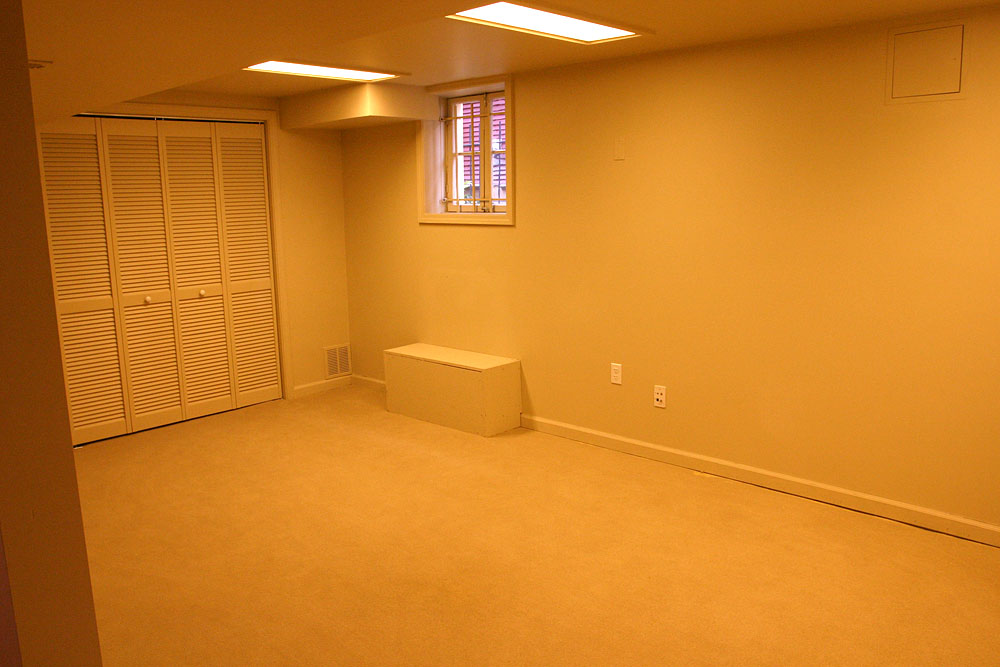CRAIG NOTTE

When Hurricane Ida flooded thousands of New York City below ground apartments on September 1, 2021, the discussion of whether and how to legalize below ground or subgrade apartments changed. Usually in one- or two-family homes and built without city oversight, subgrade apartments (apartments in basements or cellars) often contain inadequate ingress and egress, insufficient light, ventilation and dangerous electrical systems. These shadow homes are also an affordable option for hundreds of thousands of vulnerable, low-income renters that generate revenue for landlords straining to cover carrying costs. Simultaneously beneficial and dangerous, owners and tenants alike try to keep these apartments hidden from city inspection.
New York City’s range of responses to illegal subgrade apartments perpetuate the conundrums. On one hand, city government depends on illegal apartments to alleviate perpetually deficient affordable housing. Subgrade apartments supplement the market with minimal government involvement, if any, and without acquiring land or altering building size or shape. On the other hand, these apartments can be deadly. The New York City Department of Buildings (DOB) can fine owners of buildings with illegal apartments and force tenant evacuation in imminent danger, sending vulnerable people into homelessness. In 2008 alone, the DOB evacuated 1,086 illegal apartments. Monetary fines might incentivize owners with the fortitude to take on legalization within city bureaucracy and the labyrinth of code requirements; fines might also frustrate owners into abandoning legalization, especially when the cost is high, and cause them to pass the fines onto tenants. Alternatively, the city might turn a blind eye and do nothing, leaving tenants vulnerable.
For decades, city officials and non-profits have looked for ways to make subgrade apartments fire safe in a simpler, less punitive, more flexible regulatory environment. Historically, flooding in subgrade apartments occurred along the city’s coastlines. With Hurricane Ida, however, subgrade apartments located inland also flooded, making the question even broader: how do we make inland subgrade apartments flood safe, where flooding historically has not occurred? Thirteen people in subgrade apartments across Queens and Brooklyn died during Ida, some of whom were miles from the usual coastline flood zones, trapped by rushing rainwater. Countless others lost property and were displaced indefinitely. Overnight, inland flash flooding, in contrast to typical coastline flooding, rendered extant strategies for protecting tenants in subgrade apartments and compelling legalization insufficient. The push to make subgrade apartments safe during fires and coastal flooding must continue, combined with new, different strategies addressing city infrastructure ill-prepared for inland flash floods.[1]

History Of Subgrade Apartments
In 19th-century brick row houses, subgrade construction was a structural necessity. Row houses needed to be built partially below ground to support the three or four stories above them. The subgrade portion did not need to be one solid mass, however; the walls could create a partially usable, below-ground space. Residents often used these cavern-like spaces for storage and did not live in them. They were later made livable with small windows at the ceiling, better ventilation, and accessibility from the outside with steps leading down from the ground level. The number of houses grew as the population grew, and subgrade units became an integral feature with kitchens, furnaces or service rooms that kept the house running. A separate entrance allowed day laborers to come and go. For even wealthier residents, they served as bedrooms for live-in servants. Eventually, they became apartments sufficiently hospitable for primary residents to live in or rent out.
Still, there were inherent drawbacks to subgrade apartments, no matter the efforts to make them livable. Post-Victorian awareness that dark, damp housing has negative health impacts made subgrade apartments less popular. Then when World War II brought housing shortages and the shift to the suburbs, plus more single living, row houses were subdivided into apartments and rented out, floor by floor. The need for more housing, combined with the advent of modern heating and cooling systems, allowing occupancy in even the home’s dankest corners, meant subgrade apartments transitioned out of the domain of the wealthy and became stand-alone units for a wider set of social classes. After World War II, subgrade apartments remained a feature of newly constructed, single and multi-family homes in the outer boroughs, becoming critical affordable housing, especially for newly arriving immigrant populations.
Going In Circles
Illegal housing in New York City takes many forms, the common feature being failure to meet minimum habitability standards. According to the DOB, an illegal conversion is an alteration or modification of an existing building to create additional housing without city approval, where the change triggers heightened safety requirements or a meaningful change in occupancy.
The New York City Building Code sets minimum safety requirements across a range of circumstances, many with dimensional measurements down to the inch. The rules are both vague and hyper-technical. For ingress and egress, the Building Code requires ceiling height of no less than seven feet six inches with a minimum of two exits for occupancy of one to five hundred people (with exceptions). Each room must have a minimum floor area and ceiling height, depending on the use of the room, and all apartments must have at least one habitable room of at least one hundred and fifty square feet. In terms of ventilation, the Building Code distinguishes between occupiable spaces (i.e., kitchens and bathrooms, which are interpretable terms) and habitable spaces, setting different ventilation requirements for each. Sleeping rooms must have an escape window meeting minimum dimension requirements. Subgrade apartments must also have sprinkler systems and adequate light.
One of the bright line rules is that cellar apartments, by definition, are never habitable. A cellar is the underground portion of a building with one-half or more of its height below grade. In contrast, basement apartments are deemed habitable because less than one half of its height is below grade. As discussed below, the arbitrary, per se elimination of cellars from the universe of potentially legal apartments is one of the biggest challenges to legalization.
New York City has attempted to combat illegal housing with minimal success. In the late 1990s, the city increased enforcement and issued six times more citations for illegal apartments. Despite government efforts, the number of illegal apartments continued to increase. Demand outpaced the government crackdown: a 2003 report estimated that 73% of new housing growth in Queens was off record, as was 56% in Brooklyn, 44% in the Bronx and 29% in Staten Island. Tracking the number of subgrade apartments is an inexact science, housing anywhere from 300,000 to 500,000 New Yorkers.
The circular nature of the problem becomes apparent: a lack of available affordable housing drives people to low-priced but illegal apartments; landlords respond by creating illegal apartments; in turn, the city attempts to enforce the laws, but with limited success because the law fails to meaningfully distinguish between illegal and actually unsafe apartments and does not address the underlying demand. In the meantime, tenants potentially unaware of their dangerous circumstances routinely die in fires and floods they cannot escape, with the firefighters trying to save them.[2]
Then, when Hurricane Ida struck, flood deaths in inland neighborhoods were added to the list of potential outcomes.

City Obstacles And Disincentivized Owners
Enforcing safety requirements against owners is an uphill battle. The DOB is charged with investigating illegal apartments and compelling compliance. The DOB does not actively monitor for violations, except in the event of an emergency, instead of relying on a hapless complaint procedure to find illegal apartments.
Tenants infrequently complain for risk of inconvenient repairs, landlord harassment, temporary displacement or even permanent eviction if the apartment cannot be legalized. The system takes complaints anonymously, meaning anyone with an axe to grind can intentionally submit a false complaint, as can anyone with good intentions but an incorrect belief. If the DOB goes to the property to investigate a complaint, the tenant or owner must agree to let the DOB inspector inside the apartment; the inspector has no automatic right of entry without a search warrant. Search warrants are difficult to obtain without direct knowledge of the conditions to be investigated. Thus, illegal apartments often go undiscovered until tragedy strikes and the FDNY breaks in. If the DOB gains entry and finds illegal conditions, the owner is fined a minimum of $250.00 to $2,500.00, which increases depending on the number and severity of violations and length of time they remain unresolved. While imminently dangerous conditions can cause the DOB to order immediate evacuation, fining the landlord or forcing evacuation punts on the core problem.
The issue is further complicated when landlords realize that keeping the apartment hidden is more lucrative in the long run. Once the apartment is on the city’s radar, the landlord must rehab, no matter the expense, or forgo renting it. However, as mentioned, cellar apartments cannot be legalized without major structural changes to floor or ceiling heights. Thus, the landlord revealing a cellar apartment to the DOB has sabotaged their ability to rent it out until major expense is incurred, likely requiring a rent increase for tenants unable to pay the increase. A tenant who learns their apartment is not legal can withhold rent before and during an eviction proceeding, which the tenant can draw out for years, thus preventing the renovations needed to legalize.[3] In the end, the tenant can move into another illegal unit and the cycle starts over.
The Department of Housing Preservation and Development’s Basement Apartment Conversion Pilot Program
In 2019, New York City’s Mayor de Blasio administration launched the promising Basement Apartment Conversion Pilot Program in Brooklyn’s Community District 5 (East New York and Cypress Hills) to facilitate legalization for low-to middle-income homeowners in one to three-family homes. Administered by the New York City Department of Housing Preservation & Development, in partnership with Cypress Hills Local Development Corporation, the pilot program had a brief life until it was defunded during Covid-19. When launched, the program was slated to receive $12 million dollars for operations during a three-year period. In the end, the program received $91,580 for operations.
The program allowed eligible homeowners to access low- or no-interest, potentially forgivable loans of up to $120,000 for construction costs. Homeowners showed little interest: just over 100 of 8,000 potentially eligible homeowners completed the home assessment. Another obstacle was the land under East New York that is difficult to excavate, often required to make basement ceilings at least 7’6” tall. Excavation costs contributed to overall high costs for converting East New York basements, with most conversions estimated at $275,000 to $375,000, well above the $120,000 loan being offered.
Inland Flash Flooding as A New Normal
With 520 miles of coastline, more than the coastlines of Miami, Boston, Los Angeles and San Francisco combined, New York is no stranger to coastal flooding. Hurricane Sandy was the unprecedented storm exposing the city’s climate change shortcomings along coastlines. Beyond flooding at the coasts, city government must broaden the perspective to address flooding in inland, subgrade apartments. The city should recognize that, aside from coastal flooding, conditions threatening subgrade apartments are typically within the building itself, like poor electrical wiring compounded by inadequate egress. But inland flash flooding during torrential rainfall is a new, different kind of flood, exacerbated by insufficient infrastructure.
To its credit, New York City intensified its stormwater strategies after Sandy, including a May 2021 comprehensive plan by the Mayor’s Office of Resiliency. Noting that coastal versus rainfall flooding impacts different neighborhoods in different ways, the May 2021 report explained that the city has been improving infrastructure with upgrades to sewer and water capture systems, creating bluebelts, curbside rain gardens and other nature-based solutions. Although the May 2021 report says little about subgrade apartments, the city has come to recognize since Hurricane Ida that more is needed to acknowledge the new risk.
After Ida, the New York City Office of the Deputy Mayor for Administration released The New Normal: Combatting Storm-Related Extreme Weather in New York City for enhancing flood mitigation strategies already in process. The report calls for:
- Rebuilding the Basement Apartment Conversion Program;
- Appointment of a Mayor’s Office Extreme Weather Coordinator;
- Investigating the impact of climate hazards on the city’s social infrastructure;
- Accelerating storm sewer upgrades;
- Expanding the porous pavement program;
- Increasing catch basin inspection frequency;
- Stream daylighting (unburying below ground streams);
- Adding green infrastructure in city parks;
- Updating building, electrical, plumbing, and zoning codes to address intense precipitation risks and coastal flooding;
- Better extreme weather communication citywide;
- Better stormwater maps;
- Expanding the Flood Sensor Network citywide;
- Messaging specifically for subgrade apartments;
- Offering residents sandbags pre-storm.
The New Normal report offers a path forward for the subgrade apartment flooding crisis, driven by the city’s recognition that infrastructure must improve inland, although “a long term solution will require many years, billions of dollars and a complete re-imagining of this issue citywide.” The report also acknowledges that inland flooding is a racial and economic justice issue requiring care solutions for the people in vulnerable communities, including an emphasis “on what we can do right now to protect these residents,” through “community voices they trust,” plus post-disaster mental and physical health care for managing the toll that storms impose upon people’s lives. The rhetoric and strategies are there; the city must now manifest the funding and political will to implement them.
Notes
[1] The discussion of legalization herein is limited to laws and codes governing the construction of residential structures, such as the New York City Building Code and the New York City Housing Maintenance Code. Broadly speaking, however, legalization also invokes, among others, the Multiple Dwelling Law, relating to buildings with three or more families living independently from one another, the New York Real Property Law governing, in part, landlord-tenant relationships, and the New York City Zoning Law, governing the nature and intensity of a building’s use from the neighborhood perspective.
[2] See, e.g., Boy, 7, dies in fire in ‘illegal apartment’ after firefighters ‘called in sick to protest vaccine mandate, the-sun.com, Oct. 30, 2021; Two Dead from Carbon Monoxide Poisoning in Illegal Brooklyn (NY) Apartment, fireengineering.com, April 11, 2020; Barnard, Anne, supra at note 2. After Fatal Fire, Many in Queens Denounce Illegal Apartment Conversions, N.Y. Times, Nov. 9, 2009, Eligon, John & Warren, Mathew. Bronx Landlords Guilty in 2 Firefighters’ Deaths, N.Y. Times, Feb. 18, 2009; Lueck, Thomas & Khan, Daryl. Boy, 1 Dies and 3 Are Hurt in Brooklyn Basement Fire, N.Y. Times, May 8, 2007; Healty, Patrick. Apartment Fire Kills 3 People in Queens, N.Y. Times, Jan. 31, 2005, at B3; Bruni, Frank. Not Just Shabby and Dismal, Illegal Apartments Can Kill, N.Y. Times, Oct. 8, 1996.
[3] Under Multiple Dwelling Law § 325 (1), every multiple dwelling, i.e., a building with three or more residential units, must have a multiple dwelling registration on file with the Department of Housing Preservation and Development. If the owner does not comply with the registration requirement, Multiple Dwelling Law § 325 (1) provides that “no rent shall be recovered by the owner of a multiple dwelling who fails to comply with such registration requirements until he complies with such requirements.”
Craig M. Notte is a litigation partner at a New York City real estate / landlord-tenant law firm representing large and small owners in the residential and commercial contexts. He is also on the Advisory Council of the New York Landmarks Conservancy. He has a Juris Doctor from Brooklyn Law School and a Bachelor of Arts in English from the University of Rochester.

